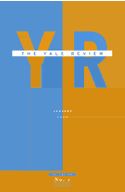
The Yale Review is not one of my favorites. It tends to be heavily academic, with just two short stories per issue. The current issue (January 2006) is typical—an essay about Henry James, a translation of Moliere, etc. But check out this poem by W.S. Merwin.
The Missouri Review, in contrast, is undoubtedly one of the best literary magazines in America (with one of the best websites). It is also enormously difficult to place work in, and yet because the editor, Speer Morgan, seems to have a policy of treating writers like human beings (this is unusual, as any writer will tell you) and so almost always a rejections slip in response to a submission of short fiction will be accompanied by some encouraging note that leaves the impression that the work has been read and appreciated. Whether it has in fact been read and appreciated is unclear, but the notes—especially when one first begins the deadly process of sending work out—are nice to see. In the meantime, while waiting for a story to be accepted by TMR, the magazine provides great reading. The current issue (Winter 2005—what the website calls “current” is actually from the Fall) is no exception: a wonderful interview with A.M Homes, a moving essay by Wendy Wacker, terrific short stories by Susan Perabo, Alex Mindt and Peter Levine.
Is it only writers who love interviews with writers? Probably. This one is interesting because Homes is interesting and, given the current James Frey controversy, has some interesting things to say about memoir and non-fiction:
“All of the notions of what fiction and nonfiction are have gotten very murky. We live in a world that has become increasingly fact oriented and fact based, and people are comforting themselves with fact in a way that we used to do with fiction. The cycle of the memoir and our interest in nonfiction as opposed to fiction is shifting. But I’m not sure people exactly know what it’s all about.”
Susan Perabo’s story uses the 9/11/01 terrorist attack in a way that I haven’t seen: in “Treasure,” a teenage girl in Pennsylvania is part of a marching band that is practicing in the vicinity of the plane that was brought down by its passengers rather than be used as a weapon by hijackers. She and the others in the band gain some notoriety for having seen the plane, except she didn’t really see it. But this piece of her gives her, briefly, the opportunity to connect with the boy she has a crush on—and she can’t tell him the truth:
“For a moment I thought maybe I could tell him, my friend Dean. Yes, I could tell him. I could say, listen, here’s a funny thing: my reed was broken, and then I stopped for a drink of water. But he was sitting beside me, the shift of his weight tilting us closer on the couch, and for the first time in a long time what I said mattered to him.”
It’s a fine story.
One Story. The current issue, Number 68, is “The Ledge” by Austin Bunn. We seem to be on something of a supernatural bent lately in One Story. In this story, set in 1497, a ship sails to The Ledge and encounters the lost souls of the crew’s loved ones:
“It is a peculiar story . . . She told me that one day, she awoke on a shoreline, crowded with people. The sea there was tideless and still. Inland, trees loomed over the shore, a forest so dense it seemed like a wall. People there wandered along this shore as far as she could see, men and women of many ages, colors, costumes, speaking in bewildering tongues. Each appeared to travel alone, and they often stopped her and begged things, but she was afraid and pulled away . . .”
No comments:
Post a Comment